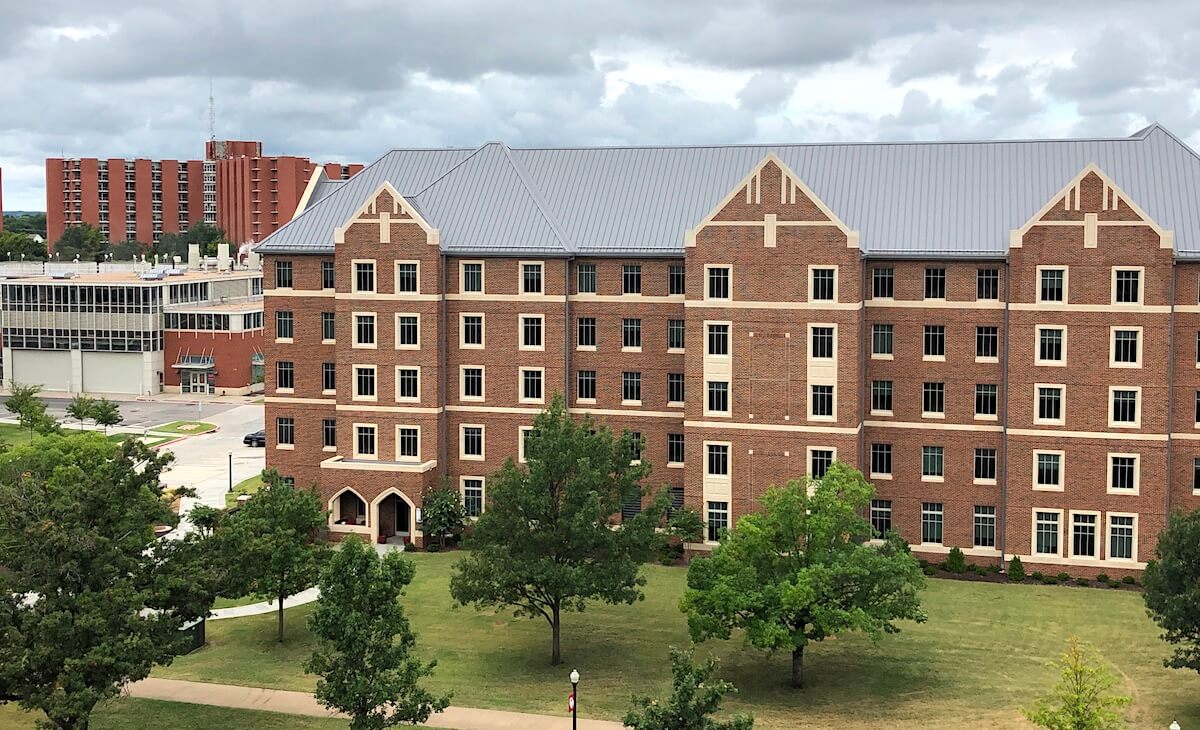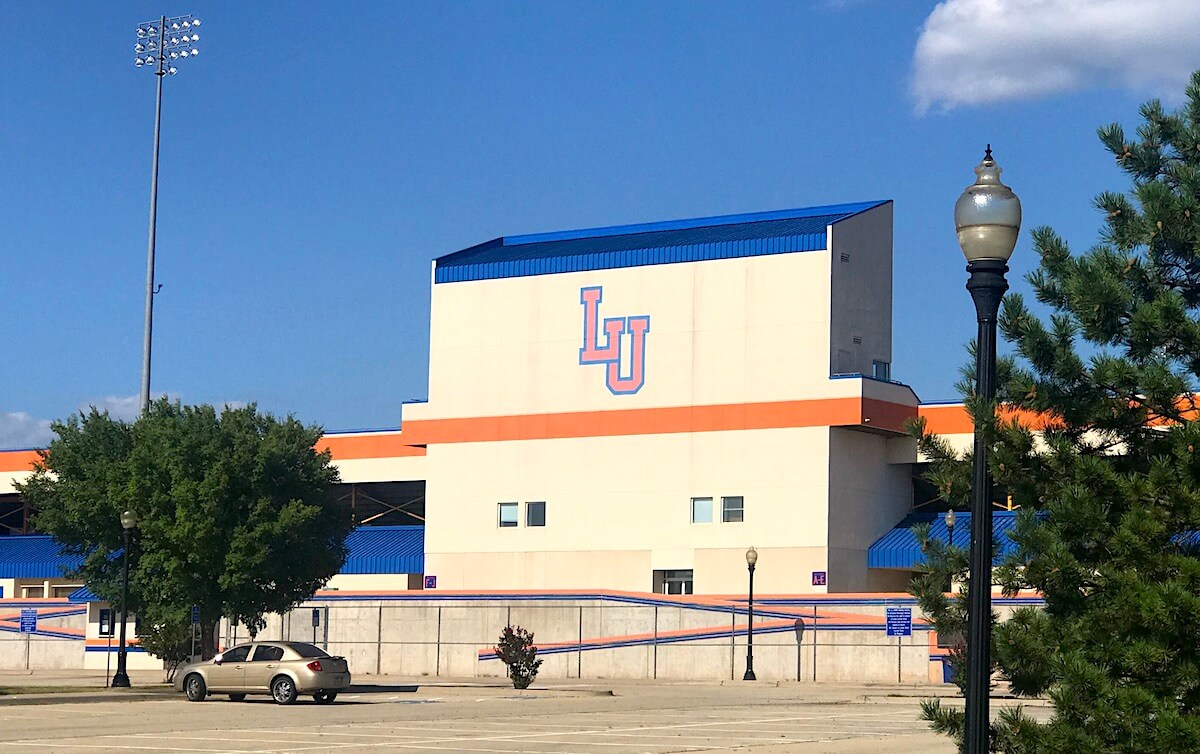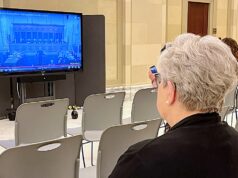

During their Thursday meeting, the Oklahoma State Regents for Higher Education heard presentations from University of Oklahoma and Oklahoma State University representatives on the institutions’ updated plans to combat COVID-19 amid rising cases on the state’s largest two campuses.
OU’s chief COVID-19 officer, Dale Bratzler, and OSU’s senior director of university health counseling and accessibility services, Chris Barlow, told the regents of plans each university had implemented before students arrived in August.
But about two weeks into the fall semester, they said each university already has a lot more on its plate when it comes to COVID on campus.
Bratzler’s role is to focus on all three of OU’s campuses, but he kept his presentation to Norman’s campus, where he said he sees the biggest challenges.
Instructors at OU are required to cancel class if a student refuses to wear a mask, Bratzler said. But students have been “highly compliant.” At OU, any class with more than 40 students is held online only.
COVID-19 on campus
Aside from increasing disinfection of areas, Bratzler said OU created a “green and clean” initiative which includes changes to the HVAC systems in order to enhance filtration and increase air exchanges with outdoor air.
Barlow, who is OSU’s dedicated coordinator for its response to the pandemic, said OSU is doing a lot of the same things as OU and started its planning in April.
“We are a rather large campus with a rather large space that was helpful throughout the process,” Barlow said.
OSU is working closely with the Payne County Health Department, holding frequent meetings, Barlow said. Many of OSU’s Stillwater students have the option of attending most classes in person while also attending or reviewing online.
Bratzler, who teaches in the OU College of Public Health, said he makes similar accommodations for students in his classes.
The universities’ responses to COVID-19 have also gotten creative.
Several weeks ago, OU started a research project to test wastewater for COVID-19 specimens, which has now become part of the university’s surveillance on testing.
The next step, Bratzler said, is to figure out how to correlate virus particles in sewage with the number of people who may of been tested. As of this week, OU is implementing individual building testing to help direct surveillance efforts, he said.
Bratzler said the Norman Wastewater Treatment plant has seen a thirty-two fold — or 3,200 percent — increase in COVID-19 particles between Aug. 26 and Aug. 28.
OU has also begun using devices called synexis spheres, Bratzler said, which generate dry hydrogen peroxide in older dorms to reduce bacterial and viral contamination.
Party scene also a factor for COVID on campus

Both universities have mandatory mask policies in place and encourage social distancing.
However, each has already seen case spikes on their campus. OSU has reported 279 active cases as of Aug 30. Of those, 121 were tested at University Health Services last week. As of Thursday, OU’s Goddard Health Services had reported 130 cases.
Most of the tests were on students who developed symptoms or had been known to have direct exposure, particularity in greek houses and residence halls, Bratzler said. OU has reported 335 individuals are self-isolation after testing positive, 315 of them being students.
Bratzler said OU has the capacity to conduct up to 500 PCR tests per day. He said, starting Thursday, voluntary testing of students began in residence halls.
“We could do 5,000 tests. That’s only if students volunteer and show up,” Bratzler said.
If students don’t, however, Bratzler said OU has had discussions on target testing, which could be based what is seen in sewage samples.
“We could test every single student in every one of our university housing units every 10 days just based on our lab capacity,” Bratzler said,
The OUDaily reported Wednesday that a university email said students who have been asked to quarantine due to possible exposure are permitted to leave their housing before their quarantine period is over, while complying with campus policies.
“The COVID Response team and Residence Life team have re-evaluated the practice of meal preparation and delivery to students that are in quarantine in Traditions East and West,” Lemmert wrote an Aug. 27 email to the Daily. “As a contact in quarantine you are still able to leave your space while wearing a mask and practice social distancing so it is within these parameters that you can go grab food from any of our on campus locations and utilize your meal plans and points.”
A handful of OU students gathered in front of Evans Hall on Thursday to protest the university’s handling of the pandemic, asking for classes to move fully online due to health risks of many students and faculty.
But loose university guidelines are not the only fuel to the fire, as seen by Bratzler. Since students returned to the main campuses of OU and OSU, news and social media reports have shown a large number of parties and bar-goers off campus.
Bratzler noted that he doesn’t think OU has documented any transmissions that have happened in a classroom.
“The transmissions are happening off campus or in housing,” Bratzler said.
Resolution will net Langston University funding

Later Thursday, the state regents approved an agreement with the U.S. Department of Education’s Office for Civil Rights that will resolve a complaint related to funding for programs at Langston University’s Tulsa campus.
The regents will provide $750,000 of funding within a three-year period to expand course offerings at LU Tulsa, and OSU is also expected to pay Langston — Oklahoma’s only historically black college — $15 million over a 10 year period.
“I am pleased that OSU President (Burns) Hargis recognized the potential of my proposal regarding the future of higher education in Tulsa. When making the proposal, it was important to me to preserve Langston University’s mission within the communities we serve, specifically north Tulsa,” said Langston University President Kent Smith in a press release. “For us, this academic agreement allows us to focus on our programs of greatest strength and at the same time to enhance and expand our nursing program by partnering with the OSU Center for Health Sciences.”
LU and OSU are governed by the Board of Regents for the Oklahoma Agricultural and Mechanical Colleges, which is expected to approve that payment at its meeting Friday, Sept. 11.




















